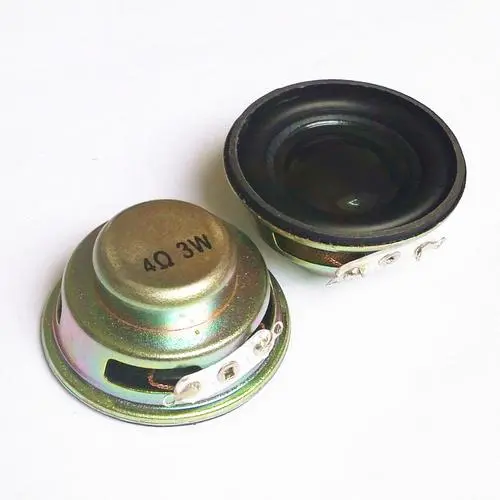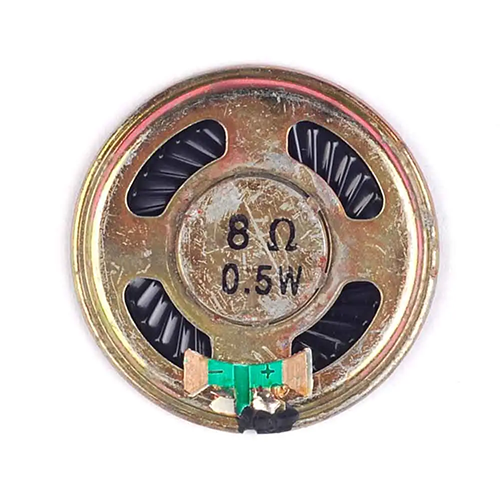I. Introduction
In the world of audio systems, speaker impedance plays a critical role in delivering the perfect sound. Whether you are setting up a home theater, car audio, or a professional sound system, selecting the right speaker impedance is paramount to achieving optimal performance. This article aims to shed light on the differences between two common speaker impedance ratings - 4 Ohm and 8 Ohm. By understanding their characteristics, advantages, and considerations, you'll be equipped to make an informed decision when choosing the appropriate speaker impedance for your specific applications.
II. Understanding Speaker Impedance
In general audio equipment, impedance is often referred to as the impedance of the speaker, the input impedance of the front and rear stage amplifiers, the output impedance of the front stage, (the latter stage is usually not called the output impedance, but the output internal resistance), signal and so on. Since the unit of impedance is still ohm, Ohm's law also applies, so in a word, under the same voltage, the higher the impedance, the less current will flow, and the lower the impedance, the more current will flow. The most common marked value of speaker impedance is eight ohms, which means that when the pair of speakers are tested at the factory, when a 1KHz sine wave signal is input, the impedance value it presents is eight ohms; or it is an average impedance value within the operating frequency response range of the speakers.
It is not a fixed value, but varies with different frequencies. When the post-stage outputs a fixed voltage to the speaker, according to Ohm's law, the four-ohm speaker will flow twice as much current as the eight-ohm speaker. In theory, a crystal post-stage with an eight-ohm output of 100 watts will automatically become 200 watts when connected to a four-ohm speaker. When the impedance value of the speaker drops all the way, the post-stage outputs a fixed voltage, and the current flowing through it will become larger and larger. In the end, it is a bit like directly short-circuiting the speaker line, so the impedance value is sometimes as low as the limit of one ohm. If it exceeds this range, the machine will burn out. This is what most people often say: the power of the rear stage does not need to be large, but it is plausible that the output current should be large.
III. Exploring 4 Ohm Speakers
4 Ohm speakers have lower electrical resistance, making them more conductive to electrical current. This characteristic impacts their power handling and sensitivity, which play a vital role in audio performance.

The lower impedance of 4 Ohm speakers allows them to draw more current from the amplifier, resulting in higher power output and potentially louder sound. However, this can pose challenges in amplifier compatibility and may require higher power ratings.
4 Ohm speakers find their place in car audio systems, portable devices, and some home theater setups. They excel in scenarios where power efficiency and compactness are paramount. However, they might not be suitable for large-scale audio installations.
IV. Delving into 8 Ohm Speakers
8 Ohm speakers have higher electrical resistance, meaning they draw less current from the amplifier. This influences their power handling and sensitivity, impacting audio output.

The higher impedance of 8 Ohm speakers makes them more compatible with a broader range of amplifiers. They typically require lower power ratings, making them energy-efficient and ideal for home theater and studio setups.
8 Ohm speakers are commonly found in home theater systems, studio monitors, and professional audio setups. Their balanced characteristics and compatibility make them suitable for high-quality sound reproduction.
V. A Comprehensive Comparison
| Aspect | 4 Ohm Speakers | 8 Ohm Speakers |
|---|
| Electrical Resistance | Lower resistance (4 Ohms) | Higher resistance (8 Ohms) |
| Power Handling | Higher power handling potential | Lower power handling requirement |
| Sensitivity | Generally higher sensitivity | Generally lower sensitivity |
| Loudness | Potentially louder sound output | Slightly lower volume levels |
| Amplifier Compatibility | May require higher-powered amplifiers | Compatible with a wide range of amplifiers |
| Power Efficiency | Lower power efficiency due to higher power | Higher power efficiency, energy-saving |
| Applications | Car audio systems, portable devices, some home theater setups | Home theater systems, studio monitors, professional audio setups |
| Sound Quality | Can achieve high volume levels | Smoother frequency response |
| System Component Considerations | Amplifiers should match power requirements | More flexible amplifier choices |
| Impedance Matching | Requires careful impedance matching | Less critical for impedance matching |
1. Power Handling and Output
Comparing the power handling capabilities of 4 Ohm and 8 Ohm speakers reveals that 4 Ohm speakers can handle higher power, potentially leading to louder sound output. However, 8 Ohm speakers can still produce quality sound with appropriate amplification.
2. Amplifier Compatibility
Speaker impedance plays a crucial role in amplifier selection. 4 Ohm speakers may require higher-powered amplifiers, while 8 Ohm speakers offer greater flexibility in amplifier choices.
3. Sound Quality and Efficiency
Sound quality and efficiency are influenced by speaker impedance. While 4 Ohm speakers can achieve higher volume levels, 8 Ohm speakers often provide smoother frequency response and better power efficiency.
VI. Choosing the Right Speaker Impedance
Considerations for Specific Applications When choosing between 4 Ohm and 8 Ohm speakers, consider factors like room size, intended use, and amplifier capabilities. Match the impedance to the requirements of your audio setup.
Speaker Impedance and System Components To avoid impedance mismatch and potential damage to the equipment, ensure that the speaker impedance is compatible with the amplifiers and receivers in your audio system.
VII. Conclusion
In conclusion, the choice between 4 Ohm and 8 Ohm speakers depends on your specific audio setup and requirements. While 4 Ohm speakers offer higher power handling and potential loudness, 8 Ohm speakers provide compatibility, efficiency, and balanced sound quality. By understanding the characteristics and applications of each, you can make an informed decision to achieve the perfect sound experience in your audio systems.

Nantian Electronics a professional distributor of electronic components, providing a wide range of electronic products, saving you a lot of time, effort and cost through our meticulous order preparation and fast delivery service.
Share this post


